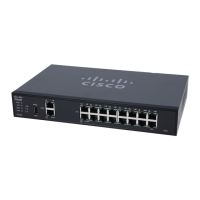Session Timeout
With the session timeout feature, you can configure the session time-out and maximum concurrent connections
for TCP/UDP/ICMP flows. The session timeout is the time it takes for the TCP or UDP session to time out
after a period of idleness.
To configure the Session Timeout, follow these steps:
Step 1
Click Firewall > Session Timeout.
Step 2
Enter the following:
Enter the timeout value in seconds for TCP sessions. Inactive TCP sessions are removed
from the session table after this duration.
TCP Session Timeout
Enter the timeout value in seconds for UDP sessions. Inactive UDP sessions are removed
from the session table after this duration.
UDP Session Timeout
Enter the timeout value in seconds for ICMP sessions. Inactive ICMP sessions are
removed from the session table after this duration.
ICMP Session Timeout
Enter the maximum number of concurrent connections allowed.Maximum Concurrent
Connection
Displays the number of current connections.Current Connections
Click to clear the current connections.Clear Connections
Step 3
Click Apply.
DMZ Host
DMZ is a subnetwork that is open to the public but behind the firewall. With DMZ, the packets, which enter
the WAN port, can be redirected to a specific IP address on the LAN.
DMZ Host allows one host on the LAN to be exposed to the Internet to use services such as Internet gaming,
video conferencing, web, or email servers. Access to the DMZ Host from the Internet can be restricted by
using firewall access rules. We recommend that you place hosts that must be exposed to the WAN for services
in the DMZ network.
RV345/345P Administration Guide
73
Firewall
Session Timeout

